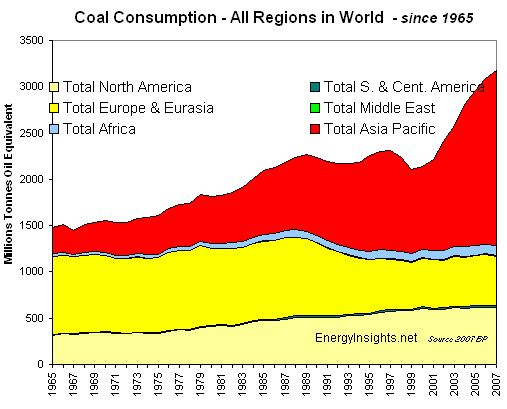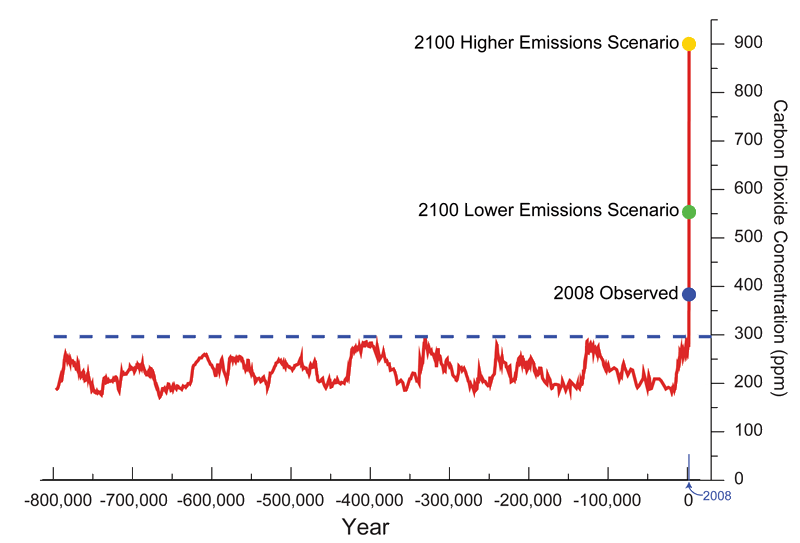Paleoclimate data suggests CO2 "may have at least twice the effect on global temperatures than currently projected by computer models"
January 13, 2011
The disinformers claim that projections of dangerous future warming from greenhouse gas emissions are based on computer models. In fact, ClimateProgress readers know that the paleoclimate data is considerably more worrisome than the models (see Hansen: ‘Long-term’ climate sensitivity of 6°C for doubled CO2). That’s mainly because the vast majority of the models largely ignore key amplifying carbon-cycle feedbacks, such as the methane emissions from melting tundra (see Are Scientists Underestimating Climate Change).
Science has just published an important review and analysis of “real world” paleoclimate data in “Lessons from Earth’s Past” (subs. req’d) by National Center for Atmospheric Research (NCAR) scientist Jeffrey Kiehl. The NCAR release is here: “Earth’s hot past could be prologue to future climate.” The study begins by noting:
Climate models are invaluable tools for understanding Earth’s climate system. But examination of the real world also provides insights into the role of greenhouse gases (carbon dioxide) in determining Earth’s climate. Not only can much be learned by looking at the observational evidence from Earth’s past, but such know ledge can provide context for future climate change.
The atmospheric CO2 concentration currently is 390 parts per million by volume (ppmv), and continuing on a business-as-usual path of energy use based on fossil fuels will raise it to ∼900 to 1100 ppmv by the end of this century (see the first figure) (1). When was the last time the atmosphere contained ∼1000 ppmv of CO2? Recent reconstructions (2–4) of atmospheric CO2 concentrations through history indicate that it has been ∼30 to 100 million years since this concentration existed in the atmosphere (the range in time is due to uncertainty in proxy values of CO2). The data also reveal that the reduction of CO2 from this high level to the lower levels of the recent past took tens of millions of years. Through the burning of fossil fuels, the atmosphere will return to this concentration in a matter of a century. Thus, the rate of increase in atmospheric CO2 is unprecedented in Earth’s history.
...
What was Earth’s climate like at the time of past elevated CO2? Consider one example when CO2 was ∼1000 ppmv at ∼35 million years ago (Ma) (2). Temperature data (5, 6) for this time period indicate that tropical to subtropical sea surface temperatures were in the range of 35° to 40°C (versus present-day temperatures of ∼30°C) and that sea surface temperatures at polar latitudes in the South Pacific were 20° to 25°C (versus modern temperatures of ∼5°C). The paleogeography of this time was not radically different from present-day geography, so it is difficult to argue that this difference could explain these large differences in temperature. Also, solar physics findings show that the Sun was less luminous by ∼0.4% at that time (7). Thus, an increase of CO2 from ∼300 ppmv to 1000 ppmv warmed the tropics by 5° to 10°C and the polar regions by even more (i.e., 15° to 20°C).
What can we learn from Earth’s past concerning the climate’s sensitivity to greenhouse gas increases? Accounting for the increase in CO2 and the reduction in solar irradiance, the net radiative forcing—the change in the difference between the incoming and outgoing radiation energy–of the climate system at 30 to 40 Ma was 6.5 to 10 W m−2 with an average of ∼8 W m−2. A similar magnitude of forcing existed for other past warm climate periods, such as the warm mid-Cretaceous of 100 Ma (8). Using the proxy temperature data and assuming, to first order, that latitudinal temperature can be fit with a cosine function in latitude (9), the global annual mean temperature at this time can be estimated to be ∼31°C, versus 15°C during pre-industrial times (around 1750) (10). Thus, Earth was ∼16°C warmer at 30 to 40 Ma. The ratio of change in surface temperature to radiative forcing is called the climate feedback factor (11). The data for 30 to 40 Ma indicate that Earth’s climate feedback factor was ∼2°C W−1 m−2. Estimates (1, 11) of the climate feedback factor from climate model simulations for a doubling of CO2 from the present-day climate state are ∼0.5 to 1°C W−1 m−2. The conclusion from this analysis—resting on data for CO2 levels, paleotemperatures, and radiative transfer knowledge—is that Earth’s sensitivity to CO2 radiative forcing may be much greater than that obtained from climate models (12–14).
...
In the longer term, past 2100, if we were to get anywhere near the kind of warming that Kiehl’s analysis of the paleoclimate data suggests we are headed to, that could render large tracts of the planet uninhabitable. That was the conclusion of a recent PNAS paper coauthored by Matthew Huber, professor of earth and atmospheric sciences at Purdue (release here). I haven’t blogged on it, but I guess I will have to now. The bottom line:
“We found that a warming of 12 degrees Fahrenheit would cause some areas of the world to surpass the wet-bulb temperature limit, and a 21-degree warming would put half of the world’s population in an uninhabitable environment,” Huber said. “When it comes to evaluating the risk of carbon emissions, such worst-case scenarios need to be taken into account. It’s the difference between a game of roulette and playing Russian roulette with a pistol. Sometimes the stakes are too high, even if there is only a small chance of losing.”
So don’t even think about what 29°F warming could mean.
...
http://climateprogress.org/2011/01/13/s ... -hot-past/



